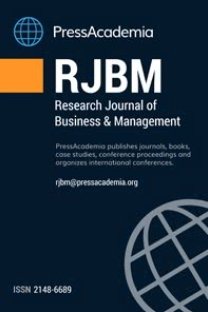EVALUATION OF NON-TYPE RATED PILOT SELECTION CRITERIA IN THE CIVIL AVIATION INDUSTRY WITH AHP AND TOPSIS METHODS
EVALUATION OF NON-TYPE RATED PILOT SELECTION CRITERIA IN THE CIVIL AVIATION INDUSTRY WITH AHP AND TOPSIS METHODS
Purpose- The purpose of the study is to show that multi-criteria decision-making methods can be used in the recruiting process of non-type rated pilots in the civil aviation sector. Methodology-In this scope, the criteria taken into consideration by the HR departments in the recruitment process of non-type rated pilots to work in the civil aviation sector have been identified in the study. Then, with the AHP method, importance levels of the criteria have been determined by taking experts opinion. TOPSIS method has been used to select the right candidate for the business among the five candidates who applied as non-type rated pilots. Findings- Finding of the study has proposed the most suitable candidate for the company. Conclusion- The effective use of AHP and TOPSIS multi-criteria decision-making techniques in an integrated manner will facilitate HR managers and decision makers in the quantitative evaluation of subjective and objective criteria. The proposed method can also be used in selection processes in other areas of HRM.
Keywords:
Human resource management, civil aviation, AHP, TOPSIS non-type rated pilots,
___
- Adanov, L., Efthymiou, M., & Macintyre, A. (2020). An exploratory study of pilot training and recruitment in Europe. International Journal of Aviation Science and Technology, 1(02), 44-51.
- Alfes, K., Shantz, A. D., Truss, C., & Soane, E. C. (2013). The link between perceived human resource management practices, engagement and employee behaviour: a moderated mediation model. International Journal of Human Resource Management, 24(2), 330-351.
- Chapman, D. S., & Mayers, D. (2015). Recruitment processes and organizational attraction. In Employee Recruitment, Selection, and Assessment (pp. 27-42). Psychology Press.
- Collins, C. J. (2021). Expanding the resource based view model of strategic human resource management. International Journal of Human Resource Management, 32(2), 331-358.
- Da Silva, L. B. P., Soltovski, R., Pontes, J., Treinta, F. T., Leitão, P., Mosconi, E.,& Yoshino, R. T. (2022). Human resources management 4.0: Literature review and trends. Computers & Industrial Engineering, 108111.
- Harvey, G., & Turnbull, P. (2020). Ricardo flies Ryanair: Strategic human resource management and competitive advantage in a single European Aviation Market. Human Resource Management Journal, 30(4), 553-565.
- Hwang, C. L., Yoon, K., Hwang, C. L., & Yoon, K. (1981). Methods for multiple attribute decision making. Multiple attribute decision making: methods and applications a state-of-the-art survey, 58-191.
- Iqbal, A. (2019). The strategic human resource management approaches and organisational performance: The mediating role of creative climate. Journal of Advances in Management Research, 16(2), 181-193.
- Langan, S. (2000). Finding the needle in the haystack: The challenge of recruiting and retaining sharp employees. Public Personnel Management, 29(4), 461-464.
- Lengnick-Hall, C. A., Beck, T. E., & Lengnick-Hall, M. L. (2011). Developing a capacity for organizational resilience through strategic human resource management. Human Resource Management Review, 21(3), 243-255.
- Lubis, A. S., & Amalia, A. (2021). Employee performance assessment with human resources scorecard and Ahp method. Journal of Management Analytical and Solution, 1(2), 72-79.
- Moradi, M., Hajalian, F., Jahangirfard, M., & Mahdizadeh Ashrafi, A. (2020). The determining human resource strategies in implementing the strategy in the field of health, based on DELPHI and AHP techniques. Educational Administration Research, 12(45), 117-150.
- Pavić, Z., & Novoselac, V. (2013). Notes on TOPSIS method. International Journal of Research in Engineering and Science, 1(2), 5-12.
- Rajabpour, E., Fathi, M. R., & Torabi, M. (2022). Analysis of factors affecting the implementation of green human resource management using a hybrid fuzzy AHP and type-2 fuzzy DEMATEL approach. Environmental Science and Pollution Research, 29(32), 48720-48735.
- Ren, S., Tang, G., & E Jackson, S. (2018). Green human resource management research in emergence: A review and future directions. Asia Pacific Journal of Management, 35, 769-803.
- Saaty, T. L. (1990). An exposition of the AHP in reply to the paper “remarks on the analytic hierarchy process”. Management Science, 36(3), 259-268.
- Shanker, M. (2020). Recruitment process and its impact on retention of commercial pilots in Indian aviation industry. Business Process Management Journal, 26(3), 736-751.
- Verma, P., Kumar, V., Mittal, A., Gupta, P., & Hsu, S. C. (2022). Addressing strategic human resource management practices for TQM: the case of an Indian tire manufacturing company. The TQM Journal, 34(1), 29-69.
- Vaidya, O. S., & Kumar, S. (2006). Analytic hierarchy process: An overview of applications. European Journal of Operational Research, 169(1), 1-29.
- Van Hoye, G. (2013). Recruiting through employee referrals: An examination of employees’ motives. Human Performance, 26(5), 451-464.
- Wang, J., Bai, W., & Liu, Y. (2022). Optimization for the human resources management strategy of the IoT industry based on AHP. Computational Intelligence and Neuroscience, 14(1),12-24.
- Yalım, F., & Mızrak, K. C. (2022). Örgütsel Özdeşmenin bir öncülü olarak örgüt kültürü: Havacılık sektörüne yönelik bir araştırma. Nevşehir Hacı Bektaş Veli Üniversitesi SBE Dergisi, 11(2), 737-759.
- Yayın Aralığı: Yılda 4 Sayı
- Başlangıç: 2014
- Yayıncı: PressAcademia
